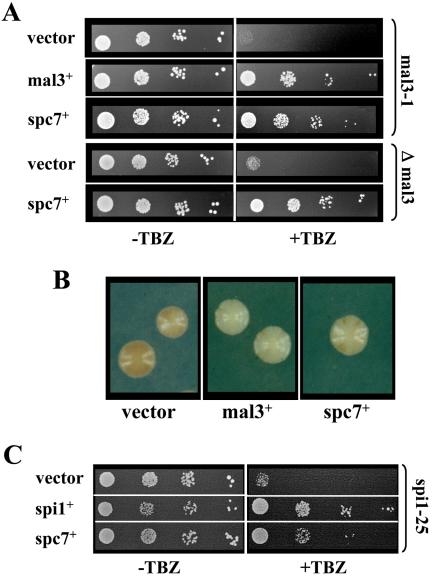Figure 1.
spc7+ suppresses the phenotypes of mal3 and spi1-25 mutant strains. (A) TBZ hypersensitivity of the mal3-1 and Δmal3 strains is rescued by extra spc7+. Left and right, serial dilution patch tests (104 to 101 cells) of mal3-1 and Δmal3 transformants grown under selective conditions in the absence (–TBZ) or presence (+TBZ) of 7 μg/ml thiabendazole for 5 d at 24°C. Vector control indicates plasmid without insert; mal3+ denotes the presence of wild-type mal3+ on a plasmid. (B) Minichromosome loss phenotype of the mal3-1 strain, indicated by adenine auxotrophy and numerous red sectors in a white colony (vector), is rescued by the presence of mal3+ or spc7+ on a plasmid. Plates were incubated at 24°C. (C) TBZ hypersensitivity of the spi1-25 strain is rescued by extra spc7+. Panels show serial dilution patch tests of spi1-25 transformants grown under selective conditions in the absence (–TBZ) or presence (+TBZ) of 7 μg/ml TBZ for 5 d at 24°C. Vector control indicates plasmid without insert, whereas spi1+ denotes the presence of wild-type spi1+ on a plasmid.

